Issue Archive
Table of Contents
BLOOD COMMENTARIES
HOW I TREAT
How I manage acquired pure red cell aplasia in adults
Clinical Trials & Observations
Pure red cell aplasia (PRCA) is a rare immune-mediated cytopenia with a heterogeneous pathophysiology that dictates differential therapeutic responses. Using 4 illustrative cases, Gurnari and Maciejewski present their approach to the management of adult PRCA, including a useful algorithm for evalution and treatment of this rare disorder.
CLINICAL TRIALS AND OBSERVATIONS
Evaluation of Longitudinal Pain Study in Sickle Cell Disease (ELIPSIS) by patient-reported outcomes, actigraphy, and biomarkers
Clinical Trials & Observations
Pittman and colleagues used electronic patient reporting, actigraph device tracking, and in-home blood draws to evaluate longitudinal data on vaso-occlusive crises (VOC), sleep and activity, and biological markers in 35 patients with sickle cell disease. Reported crises over 6 months suggest an annualized VOC rate of 8, of which 75% to 80% are treated at home; VOC crisis correlates with biochemical and functional changes in cell adhesion and elevation of C-reactive protein and interleukin-6.
HEMATOPOIESIS AND STEM CELLS
Analysis of disease model iPSCs derived from patients with a novel Fanconi anemia–like IBMFS ADH5/ALDH2 deficiency
Mu et al used patient-derived induced pluripotent stem cells (iPSCs) to elucidate the pathophysiology of ADH5/ALDH2 deficiency, a recently described syndrome associated with Fanconi anemia–like bone marrow failure. They demonstrate that ADH5/ALDH2 is critical for protecting progenitors from formaldehyde generated by progenitor cell expansion. Failure of this pathway leads to DNA damage and increased sister chromatid exchange similar to the phenotype of DNA repair pathway mutations in Fanconi anemia.
IMMUNOBIOLOGY AND IMMUNOTHERAPY
RhoG deficiency abrogates cytotoxicity of human lymphocytes and causes hemophagocytic lymphohistiocytosis
Hemophagocytic lymphohistiocytosis (HLH) is caused by heterogeneous abnormalities that impair cytotoxic lymphocyte killing of infected and malignant cells, leading to a hyperinflammatory syndrome. Kalinichenko and colleagues describe RhoG deficiency as a novel cause of HLH. The authors demonstrate that RhoG interacts with Munc13-4 (the absence of which also causes HLH) and anchors it to the plasma membrane to facilitate cytotoxic granule release.
LYMPHOID NEOPLASIA
Natural history of monoclonal B-cell lymphocytosis among relatives in CLL families
CME
Clinical Trials & Observations
Chronic lymphocytic leukemia (CLL) is associated with a high rate of familial risk. In this month’s CME article, Slager et al report the incidence of monoclonal B-cell lymphocytosis (MBL), a precursor of CLL, and its rate of progression to CLL in 310 CLL families. The prevalence of MBL was 22% at baseline, with a cumulative yearly incidence of 1.8%. Progression to CLL occurred in 1% of individuals per year. These data confirm the increased rate of MBL and CLL in families of patients with CLL.
MYELOID NEOPLASIA
Nintedanib targets KIT D816V neoplastic cells derived from induced pluripotent stem cells of systemic mastocytosis
More than 80% of patients with systemic mastocytosis (SM) carry the KIT D816V mutation. Nevertheless, its clinical presentation is heterogeneous, with a wide range of prognoses likely related to secondary accompanying mutations. By creating a panel of patient-specific induced pluripotent stem cells (iPSCs), Toledo and colleagues have provided a powerful tool to investigate patient-specific SM phenotypes and to test for targeted therapies, identifying nintedanib, an angiokinase inhibitor that targets VEGFR, PDGFR, and FGFR, as a novel KIT D816V inhibitor.
RED CELLS, IRON, AND ERYTHROPOIESIS
THROMBOSIS AND HEMOSTASIS
Genomic profiling identifies somatic mutations predicting thromboembolic risk in patients with solid tumors
The factors leading to cancer-associated thrombosis (CAT) are still not fully understood. Dunbar and colleagues analyzed the association of tumor-associated somatic mutations and clonal hematopoiesis with thrombotic risk, using more than 14 000 tumor samples. They demonstrate that while clonal hematopoiesis does not increase thrombosis risk, certain tumor-specific mutations increase the risk of CAT independently of tumor type.
TRANSFUSION MEDICINE
Anti-inflammatory activity of CD44 antibodies in murine immune thrombocytopenia is mediated by Fcγ receptor inhibition
Anti-CD44 antibodies have been demonstrated to have anti-inflammatory activity and ameliorate immune thrombocytopenia in murine models. Norris et al have elucidated the mechanism for this effect, demonstrating that the Fc portion of anti-CD44 antibodies inhibits macrophage phagocytosis by blocking Fc receptor–binding sites and thereby blocking phagocytosis of opsonized platelets.
BLOOD WORK
ERRATUM
CONTINUING MEDICAL EDUCATION (CME) QUESTIONS
-
Cover Image
Cover Image
![issue cover]()
CD68 immunohistochemistry of a bone marrow biopsy from a patient with RhoG deficiency and hemophagocytic lymphohistiocytosis. Intracytoplasmic nucleated erythrocytes are common within CD68-expressing macrophages. See the article by Kalinichenko et al on page 2033.
- PDF Icon Front MatterFront Matter
- PDF Icon Table of ContentsTable of Contents
- PDF Icon Back MatterBack Matter
- PDF Icon Editorial BoardEditorial Board
Advertisement intended for health care professionals
Email alerts
Advertisement intended for health care professionals


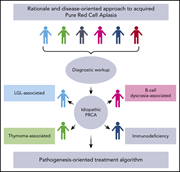


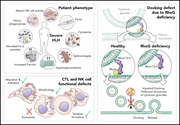
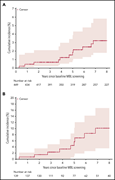


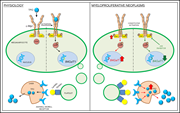

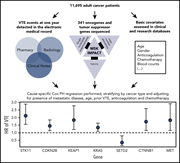
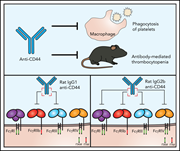

ELIPSIS: developing tools to better understand VOC in SCD
Clinical Trials & Observations